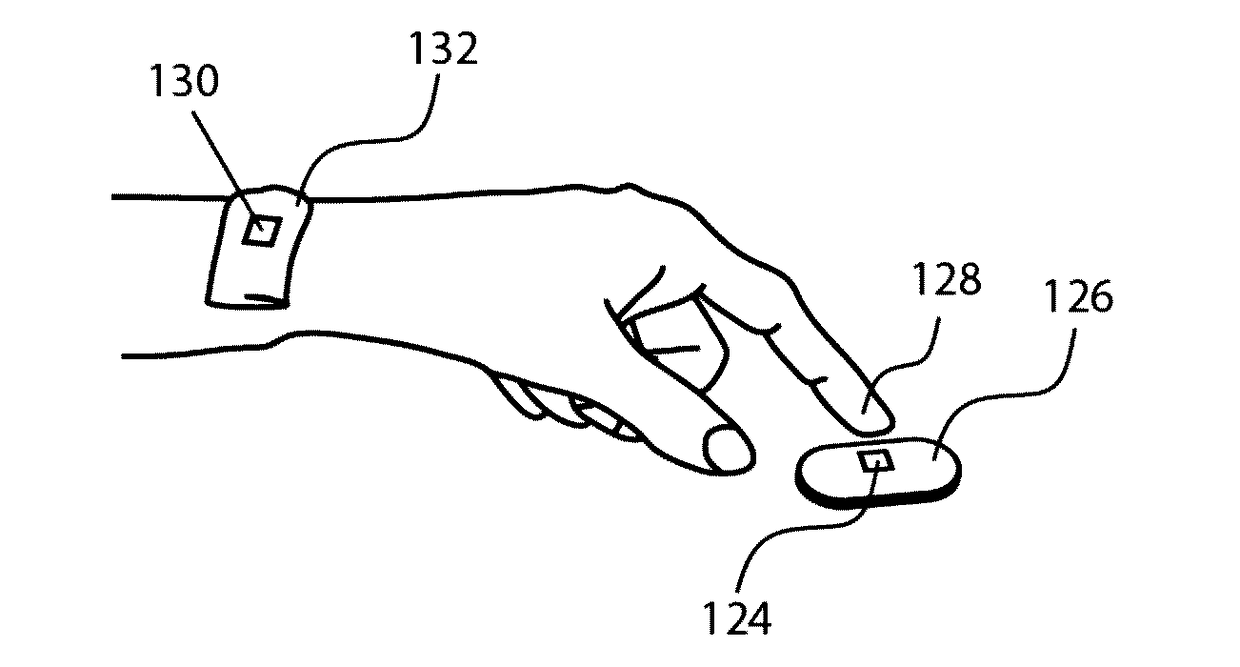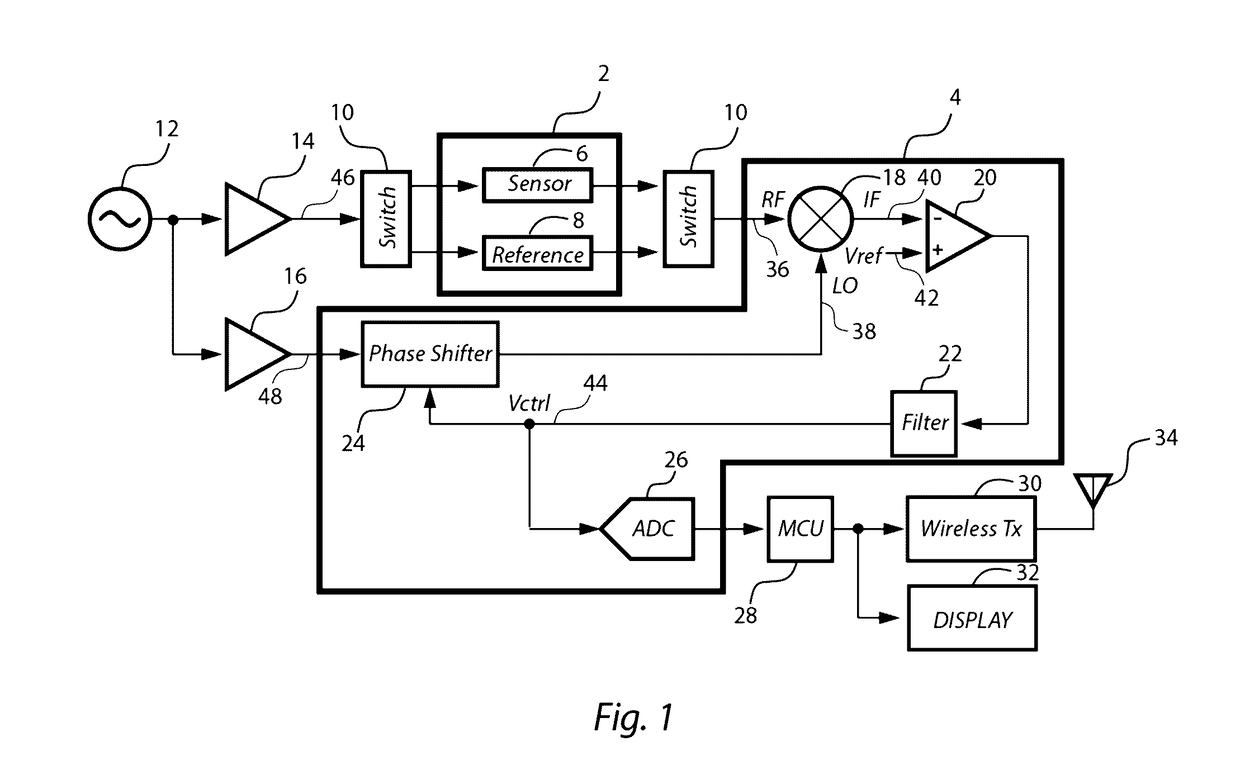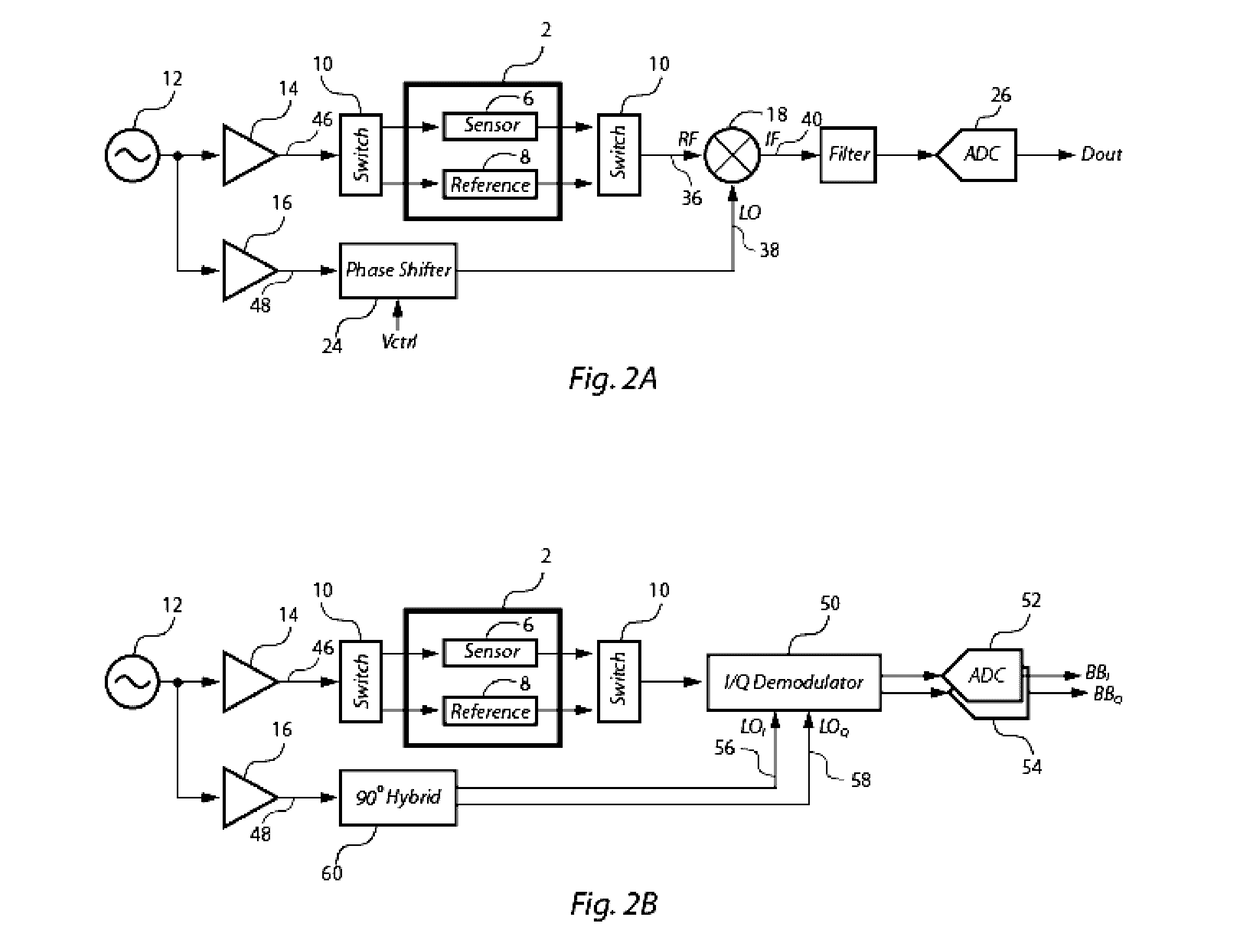Gigahertz frequency fringing near-field cardiovascular sensor
a near-field, cardiovascular sensor technology, applied in the direction of measuring/recording heart/pulse rate, medical science, diagnostics, etc., can solve the problems of limiting the form factor of the monitoring device, affecting and the lack of prior art doppler radar based methods. , to achieve the effect of simplifying the industrial design of the monitoring device and facilitating the use of wearable cardiovascular sensors
- Summary
- Abstract
- Description
- Claims
- Application Information
AI Technical Summary
Benefits of technology
Problems solved by technology
Method used
Image
Examples
Embodiment Construction
[0064]Gigahertz radio, microwave, and millimeter-wave frequency signals are often handled using microstrip structures. Such structures can include thin conducting traces on the circuit boards, and the like, and have the advantages of being both physically small, easy to configure, and inexpensive to manufacture. One aspect of such structures, which is useful for some of the embodiments described herein, is that the near-field electric fields from these structures penetrate for short distances from the edge of one of the conducting traces into the air regions and the nearby materials around the structure.
[0065]The depth of the penetration is often controlled by the gap or aperture size between the conducting traces. For example, the penetration depth is roughly equal to the substrate thickness in a microstrip transmission line. In another example, the penetration depth is roughly the gap between the centered signal line and the two adjacent ground traces in a coplanar waveguide (CPW)...
PUM
 Login to View More
Login to View More Abstract
Description
Claims
Application Information
 Login to View More
Login to View More - R&D
- Intellectual Property
- Life Sciences
- Materials
- Tech Scout
- Unparalleled Data Quality
- Higher Quality Content
- 60% Fewer Hallucinations
Browse by: Latest US Patents, China's latest patents, Technical Efficacy Thesaurus, Application Domain, Technology Topic, Popular Technical Reports.
© 2025 PatSnap. All rights reserved.Legal|Privacy policy|Modern Slavery Act Transparency Statement|Sitemap|About US| Contact US: help@patsnap.com



